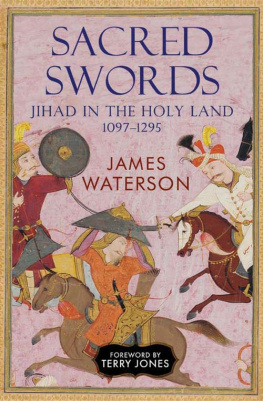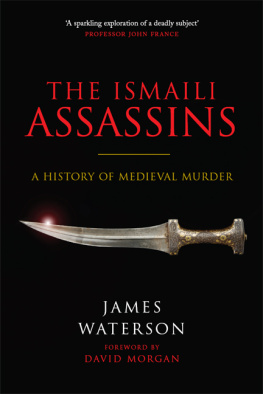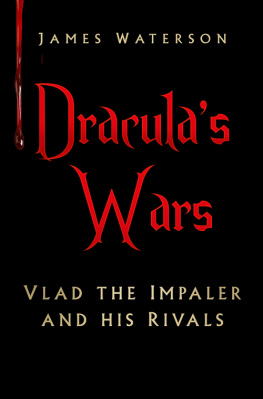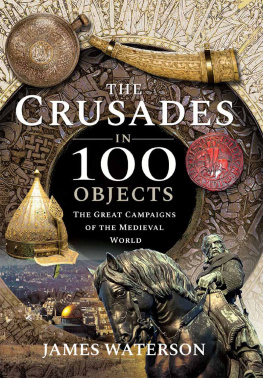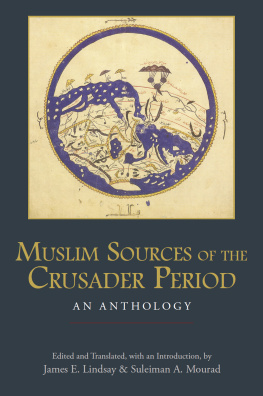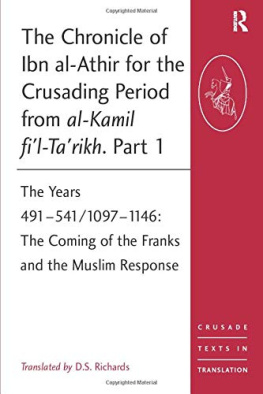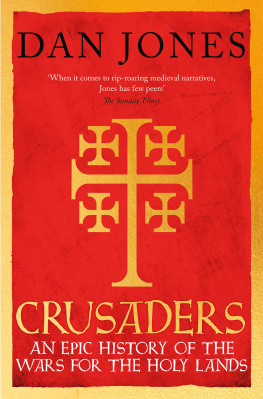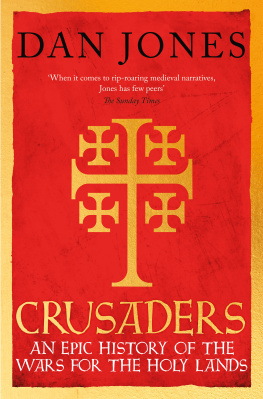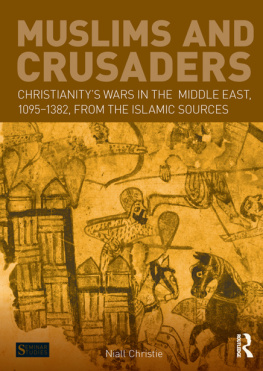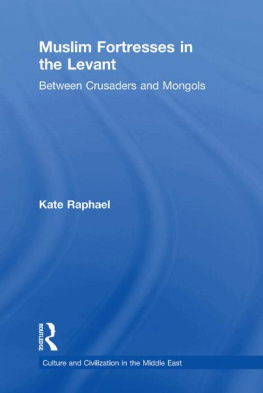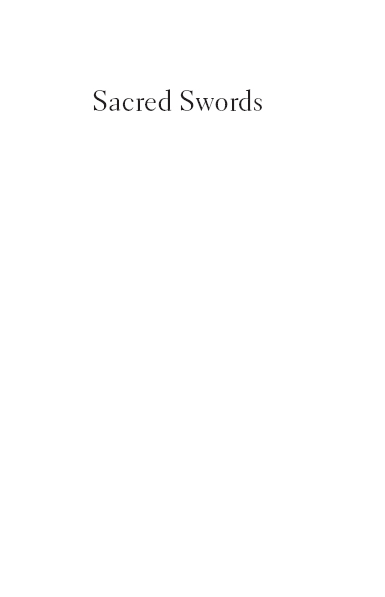

Against them make ready your strength to the utmost of your power, including steeds of war, to strike terror into the enemy of God and your enemies, and others besides, whom you may not know, but whom God knows. Whatever you shall spend in the cause of God, shall be repaid unto you, and you shall not be treated unjustly.
Quran: Sura 8, Aya 60

O believers, take your precautions; then move forward in companies, or move forward all together.
Quran: Sura 4, Aya 71

For B&T&37

F RONTLINE B OOKS , L ONDON
Sacred Swords: Jihad in the Holy Land 10971291
This edition published in 2010 by Frontline Books, an imprint of
Pen & Sword Books Limited, 47 Church Street, Barnsley, S. Yorkshire, S70 2AS
www.frontline-books.com
Copyright James Waterson, 2010
This edition copyright Pen & Sword Books Ltd., 2010
ISBN: 978-1-84832-580-7
Digital Edition ISBN: 978-1-78346-151-6
The right of James Waterson to be identified as the author of this work has been
asserted by him in accordance with the Copyright, Designs and Patents Act of 1988.
All rights reserved. No part of this publication may be reproduced, stored in or
introduced into a retrieval system, or transmitted, in any form, or by any means
(electronic, mechanical, photocopying, recording or otherwise) without the prior
written permission of the publisher. Any person who does any unauthorised act in
relation to this publication may be liable to criminal prosecution and civil claims for
damages.
CIP data records for this title are available from the British Library
and the Library of Congress
For more information on our books, please visit
www.frontline-books.com,
email
or write to us at the above address.
Typeset by JCS Publishing Services Ltd, www.jcs-publishing.co.uk
Maps created by Alex Swanston, Pen and Sword Mapping Department
Printed in Great Britain by CPI Antony Rowe
Illustrations

M APS
P LATES
The plates are positioned between pages 110 and 111
1 Small buckler shield
2 The great mosque of Damascus
3 Karak castle in Jordan
4 A counterweight trebuchet
5 A qarabugha mangonel
6 Early grenades
7 The tomb of Mamluk sultan Baybars in Damascus
8 One of Saladins tombs in the great mosque of Damascus
9 Lion emblem of Sultan Baybars
10 Film poster for Egyptian movie al-Nasir al-Saladin
11 Film poster advertising The Search for Saladin
12 A Crusader church converted into a mosque
13 Damascuss city walls and citadel
14 Aleppos main gate
15 A nineteenth-century view of Jaffa
16 Folio from Shahnama (The Book of Kings) by Firdawsi
17 A hunting scene from Khusraw u Shirin by Nizami
18 A nineteenth-century engraving of Saladin the Victorious
19 A polo game illustration from the poem Guy u Chawgan
20 A canteen from the Ayyubid period
21 A plate from the Fatimid period
22 A Mamluk glass vessel
23 A decorated dish from the Saljuq period
24 Modern-day descendant of the the Arab warhorse
25 Folio from the Tarikh-i alam-aray-i Shah Ismail
26 Statue of Saladin in Damascus
27 Stonework Mamluk blazons
28 The citadel of Aleppo
29 The mihrab of the Mongol Ilkhan Oljeitu in the great mosque of Isfahan
30 The Dome of the Rock, Jerusalem
31 The Church of the Holy Sepulchre, Jerusalem
32 The walls of Antioch
33 The Gate of Herod and a section of the walls at Jerusalem
34 The Battle of Ascalon, 1099
35 Armour of the askari
36 Muslim helmets
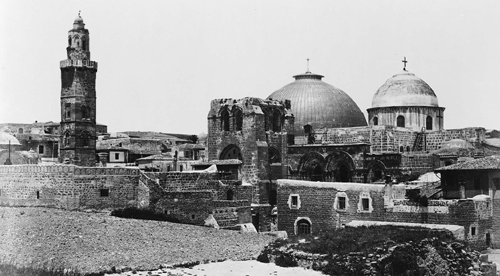
The Church of the Holy Sepulchre in Jerusalem
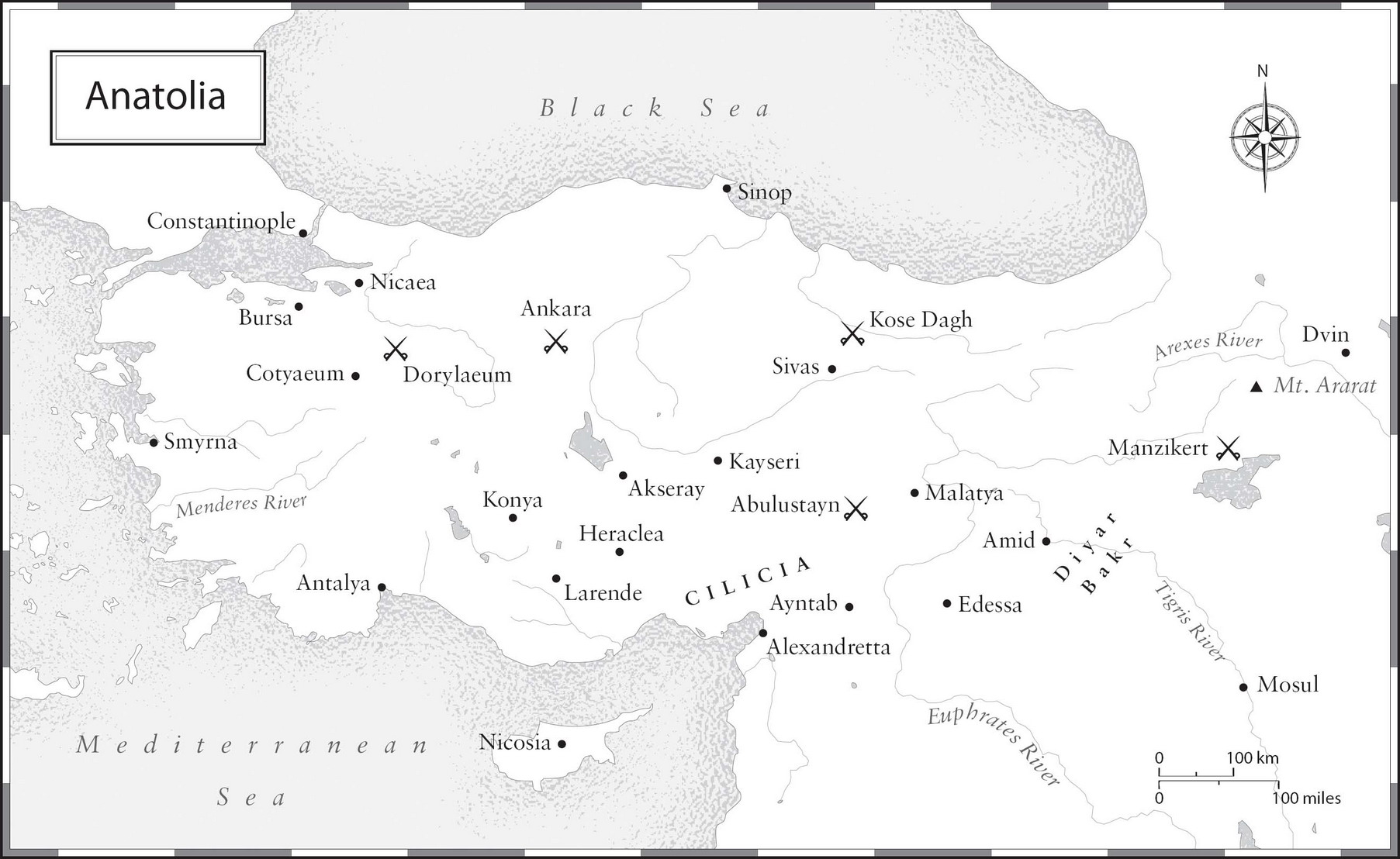
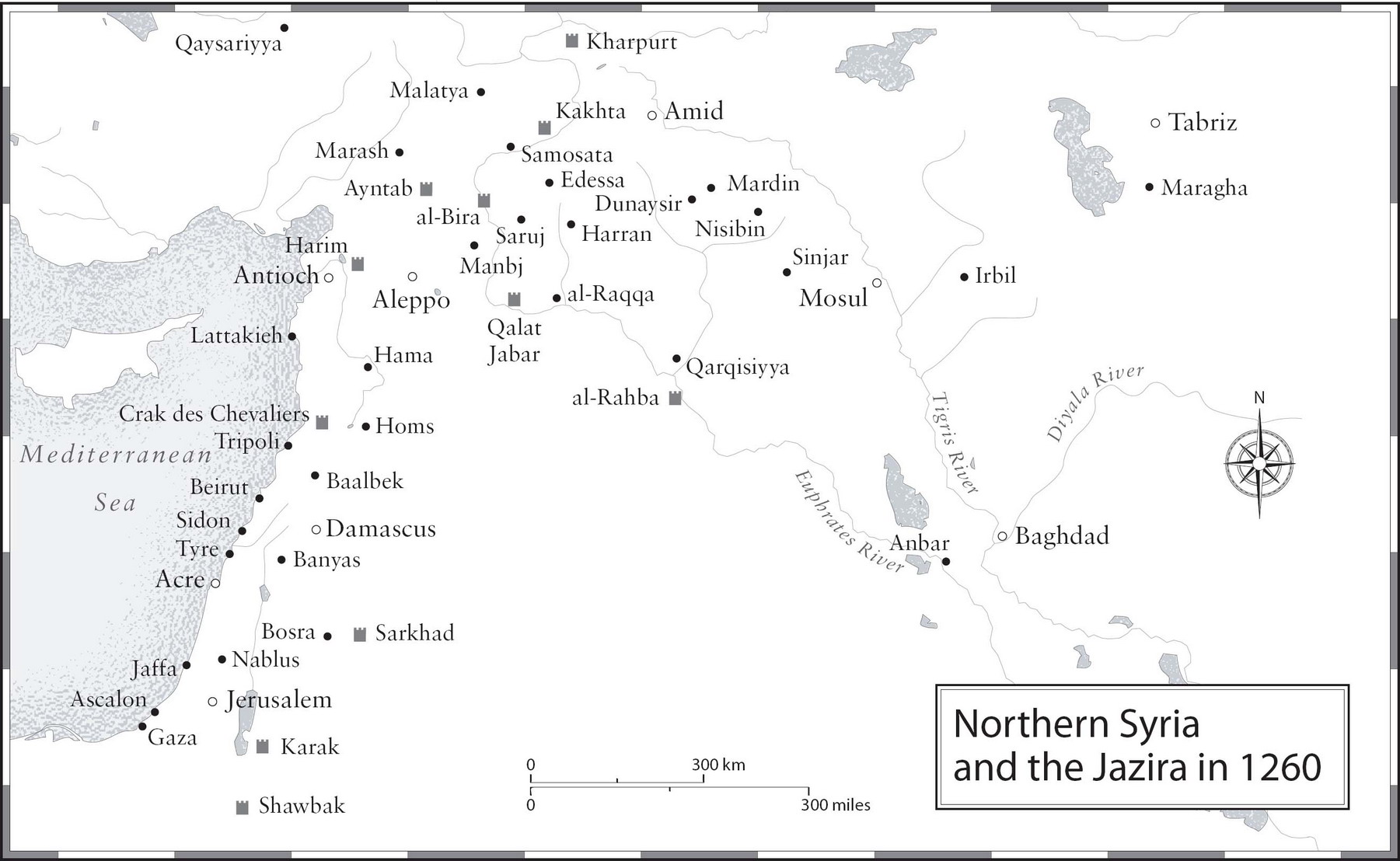
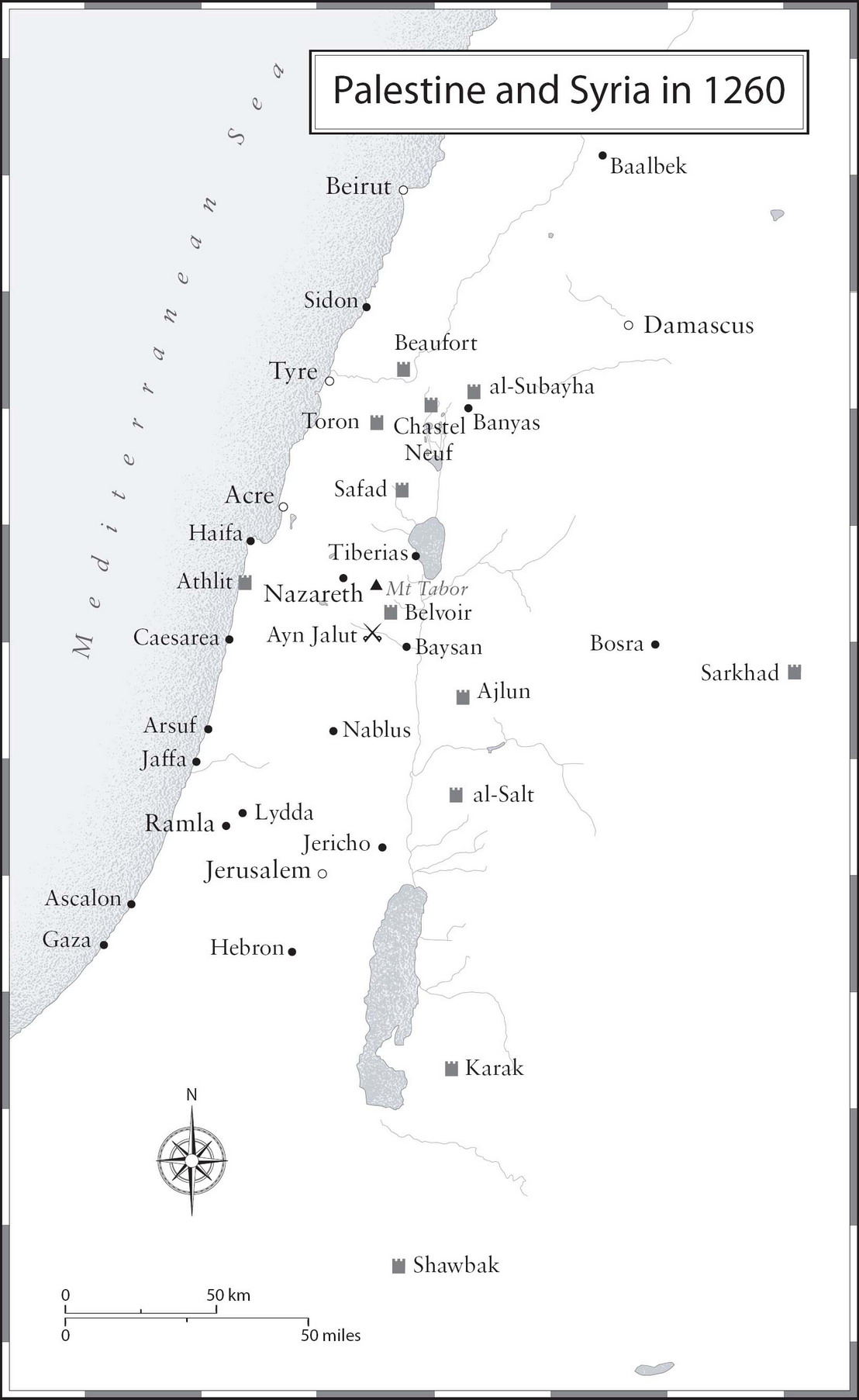

A Note on Transliteration

There are many, many ways of rendering Persian, Arabic, Turkish and Mongolian into English. I have generally opted for the most commonly used short forms of names rather then the more scholarly forms, simply because the vast swathe of names that the reader encounters whilst reading any history of the medieval Middle East means that any familiar faces are welcome.
For city and country names I have used the nomenclature of the period. The Crusader cities are given their Frankish names rather than the Arabic, as this is how they are most commonly denoted in other texts that the reader might be led to review. Persia has been preferred over Iran simply because the medieval entity of Persia covered a larger geographical area than modern Iran does. Similarly, medieval Syria was far larger than the modern state of the same name and embraced all of Lebanon and modern Israel.
Of course, the events of the medieval Middle East were recorded by contemporary Islamic writers in the Arabic calendar, which is based on a lunar cycle and dated from the Hijra the Prophet Muhammads flight from Mecca to Medina. I have, however, used the Christian calendar and all dates are Anno Domini as I want the reader to be able to parallel the events described with what was happening in Europe at the same time.
Acknowledgements

My thanks go out once again to friends and mentors who have encouraged me during the writing of this book, and of those that came before it. A special mention needs to go to Dr David Morgan for his continued kindnesses and to Robert Irwin for planting the seeds of this particular volume in my mind as we floated gently, well and truly up the creek, on one of Dubais waterways last spring.
Of course I will be indebted to the end of my days to Terry Jones for finding the time, amongst the myriad of other things that he always seems to be either in the process of creating, seeing to completion or dreaming up, to produce a foreword that truly fulfils what good history is all about and proves Benedetto Croces dictum completely. Every historical judgement gives to all history the character of contemporary history, because however remote in time events thus recounted may seem to be, history in reality refers to present needs and present situations wherein those events vibrate.

